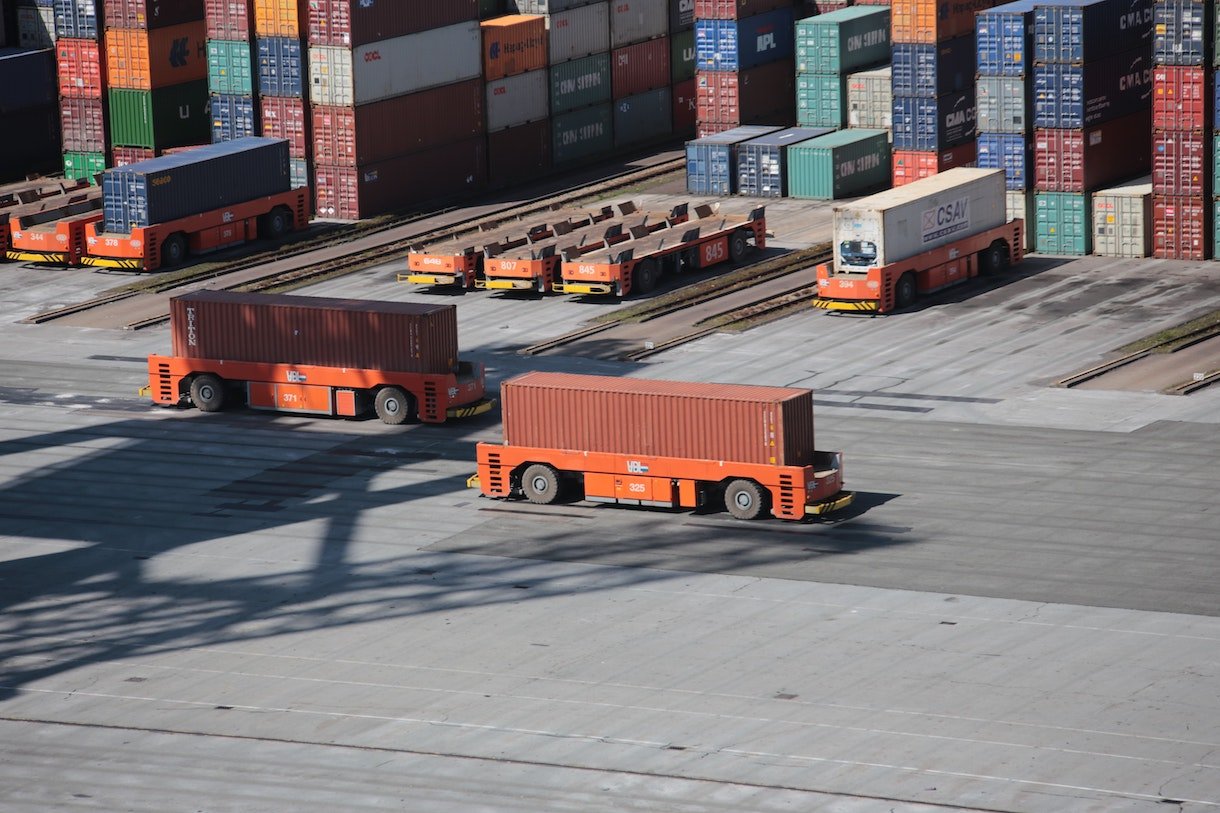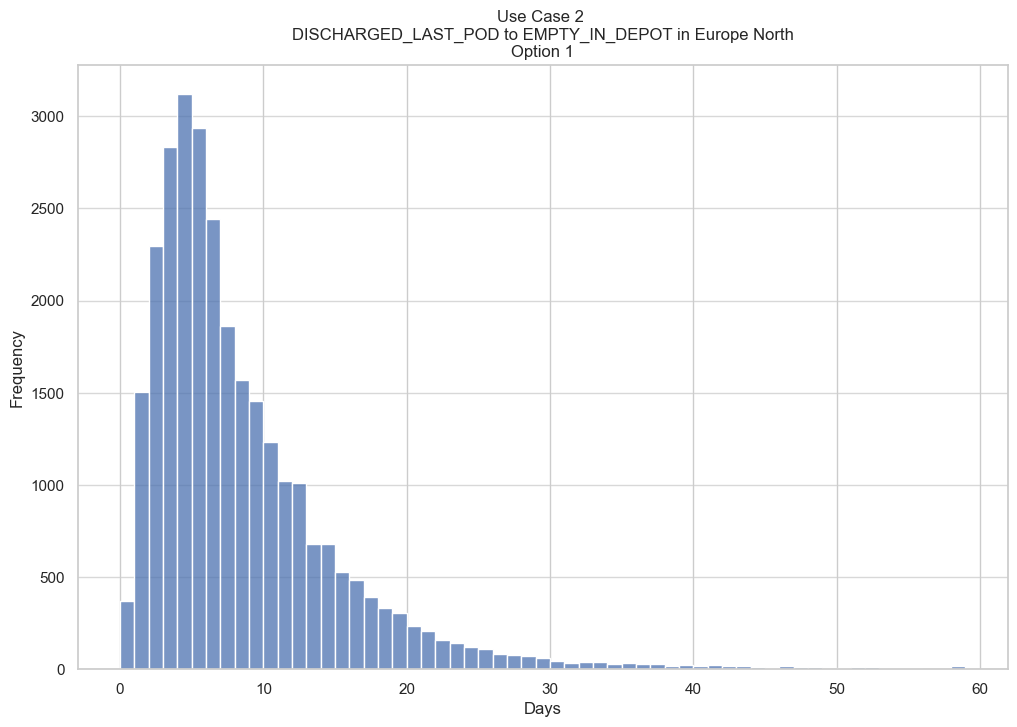Did you know how long it takes container users to return empty containers in Europe compared to the US? To find out we’ve analyzed millions of container journeys with our partner Fraunhofer CML. Results reveal both average return times and levels of demurrage charges across different regions.
Written by Kretschmann, Lutz (Head of Research Team ‘Marine Operations Management’ at Fraunhofer Center for Maritime Logistics and Services CML) and Frese, Florian (Marketing Lead, Container xChange)
Due to the current container imbalances, equipment is extremely scarce at some Asian ports while many Western ports are congested. In both cases, container owners and users are interested in short turnaround times. Especially for container users, the question how long it takes to return empty containers is of high relevance. For every day beyond the granted free period (of usually 3 – 4 calendar days), hefty demurrage and detention charges of up to hundreds of dollars per day will be invoiced.
In order to find out how long it takes to return empty containers to depots on average, we looked at millions of container journeys. Underlying data was collected via direct API to NVO/ carrier tracking systems, live pickup and drop-off data from depots, and successful deals on Container xChange, amongst others. To do the analysis we teamed up with German research institute Fraunhofer CML. As experts on machine learning in maritime logistics they were the right partner to get the insights we wanted.
Having previously aggregated demurrage & detention rates across the top 20 ports and top 10 shipping lines, we can now combine this information with an expected time span between unloading of the container in the POD to returning it empty at the depot. In other words: This helps us understand how much demurrage & detention container users actually pay across different regions.
Europe and South-East Asia with quickest equipment return

Average container return time if discharge at POD and container depot in same location across different regions
How long it takes to return empty containers varies noticeably depending on the geographical region, but other factors play a role as well. It comes as no surprise that container users need more time to return containers if POD and depot are in two different locations. While the global average time for return of the equipment is nearly 12 days (arithmetic mean), this figure drops to 8.5 days when POD and depot are in the same location and increases to a little over 14 days if discharge and return are geographically separated.
In both cases, Europe ranks first with only 8.8 days on average followed closely by South East Asia where the return takes 8.9 days. Among regions we looked at, it takes the longest in North-East Asia and the Middle East with 12 and 11 days respectively. The highest value was observed in Northeast Asia with more than 20 days between discharging at POD and returning the containers empty when both took place at different locations.
But what happens in case things go wrong? Congestions, missing documents, or incorrectly declared cargo can quickly delay transport and thus get expensive for the container user in terms of demurrage & detention charges. Our analysis has revealed that returning equipment takes users more than 12 days in 25% of cases across all regions. On this 75% quantile (also known as 75th percentile or upper quartile) Europe and South-East Asia show the lowest time spans with only 10 days. To put this into perspective, the 75% quantile value in Middle East and North-East Asia stands at a significantly higher 14 days.
Looking at the outliers – to find out how often it becomes really expensive – we identified that in 5% of the cases it even takes more than 30 days to return empty containers.
Highest level of prediction uncertainty in North-East Asia and the Middle East

Let’s take a look at the variance and median values across regions as a basis for making forecasts on expected return times. The velocity tells us how much individual values spread out from their combined average value. The higher the variance the more individual return times will differ from the mean making it more difficult to predict values correctly.
According to our data, North America and Europe have the lowest variance whereas North-East Asia and the Middle East show the highest standard deviation. Unsurprisingly, variance is much higher for cases where POD and container depot are in two different locations.
To forecast demurrage charges, we use the median value of days between discharge at POD and empty return to a depot. This figure is lowest in Europe and South-East Asia with only 6 days. North America has the highest median of 8.3 days while it takes only slightly less time in North-East Asia (8 days).
Expected demurrage charges are $225 in Hamburg compared to $1147 in Los Angeles

Time it takes to return empty containers at a depot in Europe if discharge at POD and depot in the same location
Now that we know how long it takes to return empty containers, we can bring demurrage charges into the picture to calculate expected cost for container users. To this end we compare European ports (lowest median empty return time) to American ports (highest median value).
If import takes place via Hamburg and 6 days pass from discharge to returning the equipment empty – the mean value we identified for Europe – demurrage charges per container would amount to $196.2 with HMM, $218 with YANG MING, and $261.6 with COSCO Shipping. In comparison to that, moving cargo over Antwerp is cheaper in regard to demurrage per container with $65.4 if shipped with HMM, $98.1 for YANG MING, and $196 charged by COSCO Shipping.
Looking at the Port of Los Angeles, where it takes a little more than 8 days to return empty containers at a depot after discharge according to our data, we can see significantly different expected demurrage charges. Here the average demurrage cost is $1147. YANG MING turns out to be the most expensive at $1590 per container compared to $705 if you ship with HMM.
Don’t forget to factor in demurrage charges in your calculations
Combining average time spans between discharge at POD and return of the empty container at the depot with demurrage & detention rates shows that several hundred dollars in overtime charges quickly add up and – depending on the location – can be considered a standard if you plan within 10 days’ time.
While it usually takes less than 10 days to return equipment in Europe, North-East Asia, and the US, our analysis has shown that especially in US ports high demurrage & detention rates lead to rapidly increasing costs e.g. in case delays occur and containers are returned late. Compared to that it generally takes longer to return empty equipment in South-East Asia and Middle East, but demurrage & detention charges are lower as well.
To help you make better forecasts and reduce demurrage & detention charges, we’ve created a demurrage & detention calculator covering the biggest carriers and have published a report about demurrage & detention charges with the biggest findings. Feel free to reach out anytime to find out how Container xChange can help you save demurrage & detention charges.
Our cooperation with Fraunhofer CML will continue beyond this first analysis. Together we want to develop data-driven solutions in order to support decisions under uncertainty in container logistics. A first focus is predictive analytics and machine learning to provide reliable forecasts of empty container demand and supply per region. Feel free to get in touch to learn more about Fraunhofer CML and how we support the maritime industry to use data-based methods from proof-of-concept to implementation.
The project on which this report is based was supported by the Federal Ministry of Education and Research under the funding code 01IS20004A. The responsibility for the content of this publication lies with the author.

